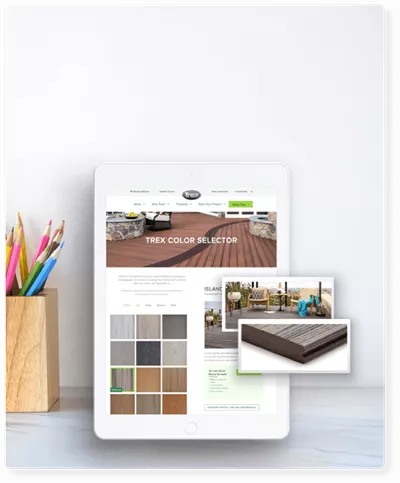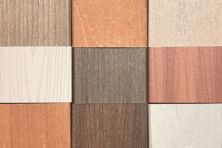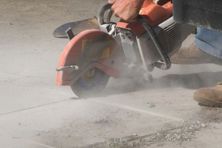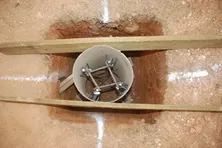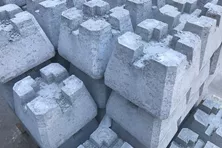Aluminum Decking Reviews, Pros & Cons, and Costs
As an option for decking material, aluminum decking is a small category with some unique attributes when compared to more commonly available materials. Its minimal upkeep requirements and a phenomenal lifespan can make aluminum the perfect material for many projects. It’s just a matter of weighing all the pros and cons, like the higher upfront cost of the material.
Aluminum Decking Cost
The cost of aluminum decking is about $12-15 per square foot, while the average is closer to $13 per square foot. Costs of labor can vary widely, and rely on factors such as geographic region, site variances and even the skill level of the installer you choose to hire. Typically, it’s a fairly accurate up front assumption that materials make up approximately one-third of the total project cost.
Aluminum Decking Pros and Cons
Pros
Aluminum decking requires little maintenance, is not vulnerable to infestation or rot, and it is somewhat scratch-resistant. Many aluminum decking products include at least a 20-year warranty, but a modestly maintained aluminum deck could hypothetically survive for much longer than that without a structural degradation. Aluminum decking is also hollow -- and its ability to not hold heat and dissipate what heat it does receive – means that you may find it is faster to get to a temperature that is comfortable under foot.
This doesn’t necessarily mean that you can walk barefoot on aluminum decking on a hot day, but as the sun sets it may cool off faster than more dense decking materials. Colors matter, the darker any decking material is the more it will heat up in the sun.
In summary, aluminum can:
- Provide an excellent product lifespan.
- Keep upkeep requirements to the bare essentials.
- Protect itself from weatherization and other common forms of damage.
- Quickly dissipate heat
Cons
While beauty is in the eye of the beholder, wood and composite decking (that mimics the look of wood, minus the upkeep) is often considered to have a more pleasing aesthetic than aluminum. However, depending on the look you are trying to achieve, the linear look of aluminum decking may appeal to you.
Additionally, aluminum decking can create a “ping” sound that resonates when struck. The noise and heat difference can be eliminated with special designs, but those designs add to the already high expense of aluminum. In short:
- Higher upfront cost than most alternatives.
- Considered less attractive than wood.
- Creates a different feel under foot than alternatives
- Can be hard to find in some markets.
Types of Aluminum Decking Products
Aluminum decking products don’t present the same variety of options as you’ll find with other materials. However, you do have several aluminum decking material options, many of which can be adapted to suit a wide range of styles and functions. Some of the most important categories include:
Waterproof Aluminum Decking
Apart from the material itself being water-resistant, aluminum deck manufacturers have created designs that also provide a watertight area beneath the deck. Using interlocking systems that leave no gaps and channels to direct the water, creating a watertight aluminum decking surface can create new spaces for storage or social gatherings. That can make watertight aluminum decking an attractive option for areas with heavy rain, though these designs do add to the installation expense needed to build a deck.
Aluminum Decking Boards
Standard aluminum decking boards are made in a variety of different sizes. Unlike aluminum decking designed to create a dry space underneath, a traditional array of aluminum decking boards that retain the typical gap between each board, allowing water to pass, are also available. This can decrease the overall cost of your project, and may leave you with the option of adding a waterproof drainage system at a later time.
Aluminum Decking Finishes
The most common finish for aluminum decking is a powder coat, which helps provide a modest range of color options and provides some texture, which can help reduce slips and falls. The most common alternative is mill finished aluminum. It has a sterile, utilitarian appearance that’s best used for projects where aesthetics count for little. This type of finish is popular in marine applications, such as docks. Beyond ordinary finishes, some brands coat their decking in Polyurea, a special kind of epoxy-like material. One key performance attribute to pay close attention to with coated aluminum is color retention. There are standards metal coated manufacturers test to, and the most common is AAMA 2604. AAMA 2604 as a standard states a fade level (measured in Delta E) of 5 Delta E over 5 years. Most composite manufacturers offer 25 year fade warranties that claim the same 5 Delta E level of color fade over a 25 year period. This basically means that composites are often more color fast when exposed to UV over a longer period of time.
Aluminum Deck Frame
Much like with aluminum decking boards, there are pros and cons to using an aluminum joist system to support your deck. In most cases, barring an inferior product, aluminum is roughly three times stronger than wood. That allows for greater distances between deck supports. Unlike wood, an aluminum deck frame is not prone to warping or cracking, which allows for a much more stable frame. It should be noted though, aluminum substructures are extremely expensive and not easy to source.
Aluminum Decking Reviews
Wahoo Decks
Wahoo Decks are engineered to help provide the lowest possible maintenance, all the while ecologically responsible. Made from recycled aluminum, Wahoo has a variety of adaptable railing, drainage systems, and essentially everything else necessary to create your dream deck. That includes gapped planks for a traditional look, waterproof designs, and a variety of DIY installation options.
Though Wahoo has a few products intended for residential purposes, the lion’s share of their product options are designed for commercial applications. Their residential product line, Fortis, is available in just three colors: clay, granite, and sandstone. For the most accurate pricing, you’ll need to request a quote, but their aluminum decking boards are around $5 per linear foot before considering other necessary components.
Versadeck
Versadeck is also divided among commercial and residential options for their railing and deck kits. Like with many brands specialized in aluminum decking, they offer both a waterproof aluminum decking system as well as a fully modular deck system. That grants far more adaptability than most comparable brands.
Versadeck is available with an impressive eight color options. And perhaps most noteworthy of all, this brand offers a line of decking boards specially coated in a thick protective layer of Polyurea. That can make aluminum cooler to the touch, eliminate the “ping” noise when aluminum decking boards are struck, and to roughly retain the natural texture of the material.
If you’re considering aluminum decking as an option for your own deck, do your homework, investigate the pros and cons, and look into reviews for different brands on the market. This will ensure you have a deck that gives you years of enjoyment and fits your wants and needs.
Capped Composite Decking
What is capped composite decking? It's a great option if you like the look of wood but not the maintenance. Learn about capped composite at Decks.com.
Hurricane Ties: Uses and Installation
Hurricane ties provide your deck with additional stability against high winds and rain. Learn how to utilize and install hurricane ties on Decks.com.
Common Wood Defects: Types & Causes of Lumber Issues
There are many common types of defects when it comes to wood decking, such as dead knots, shakes, twists and wanes. Learn about lumber defects at Decks.com.
Cutting a Concrete Pad
Learn how to use a concrete saw to cut a hole in a patio slab to install a deck footing.
Protecting From Collapse
Learn how to use cardboard sonotubes and hole covers to protect your deck footing holes from caving in and flooding before pouring concrete.
Layout Deck Foundations
Learn how to lay out your deck footings accurately using triangulation with our step-by-step instructions.
More Helpful Resources
Explore Articles by Topic

Footings
Information related to installing frost footings for decks

Framing
Learn structural framing methods

Decking
Learn about wood and composite decking materials

Stairs
An in-depth look at the complex issue of how to build stairs

Railings
How to install guardrails and handrails to meet IRC code

Features
An overview on water drainage, benches, planters and lights

Design
The basics of deck design

Planning
Learn about permits and working with contractors

Porches & Patios
Build a covered deck to enjoy all seasons

Ledger
Proper attachment techniques

Care
Maintain your deck to maintain your investment

Materials
An overview on water drainage, benches, planters and lights
Is Trex Decking Worth the Investment? Expert Insights and Reviews
Discover why Trex decking is worth the investment. Learn about its durability, low maintenance, eco-friendliness, and the long-term value it adds to your home.
Eco Friendly Composite & Wood Decking Options
Looking for the most environmentally friendly way to add a gorgeous deck to your home? Learn how composite decking is made from recycled materials at Decks.com.
TimberTech
TimberTech Decking is manufactured by Timbertech Limited in Wilmington, OH.
How many footings do I need?
Avoid a wobbly deck! Learn how to calculate the right number of footings to keep your structure safe and solid.
Retaining Walls
Avoid problems related to digging deck footings near retaining walls. Learn some tips from the pros for how to handle these difficult situations.
Can I use pier blocks?
Our inspector explains the pros and cons of using pier blocks for deck foundations.
Explore Articles by Topic

Footings
Information related to installing frost footings for decks

Framing
Learn structural framing methods

Decking
Learn about wood and composite decking materials

Stairs
An in-depth look at the complex issue of how to build stairs

Railings
How to install guardrails and handrails to meet IRC code

Features
An overview on water drainage, benches, planters and lights

Design
The basics of deck design

Planning
Learn about permits and working with contractors

Porches & Patios
Build a covered deck to enjoy all seasons

Ledger
Proper attachment techniques

Care
Maintain your deck to maintain your investment

Materials
An overview on water drainage, benches, planters and lights

